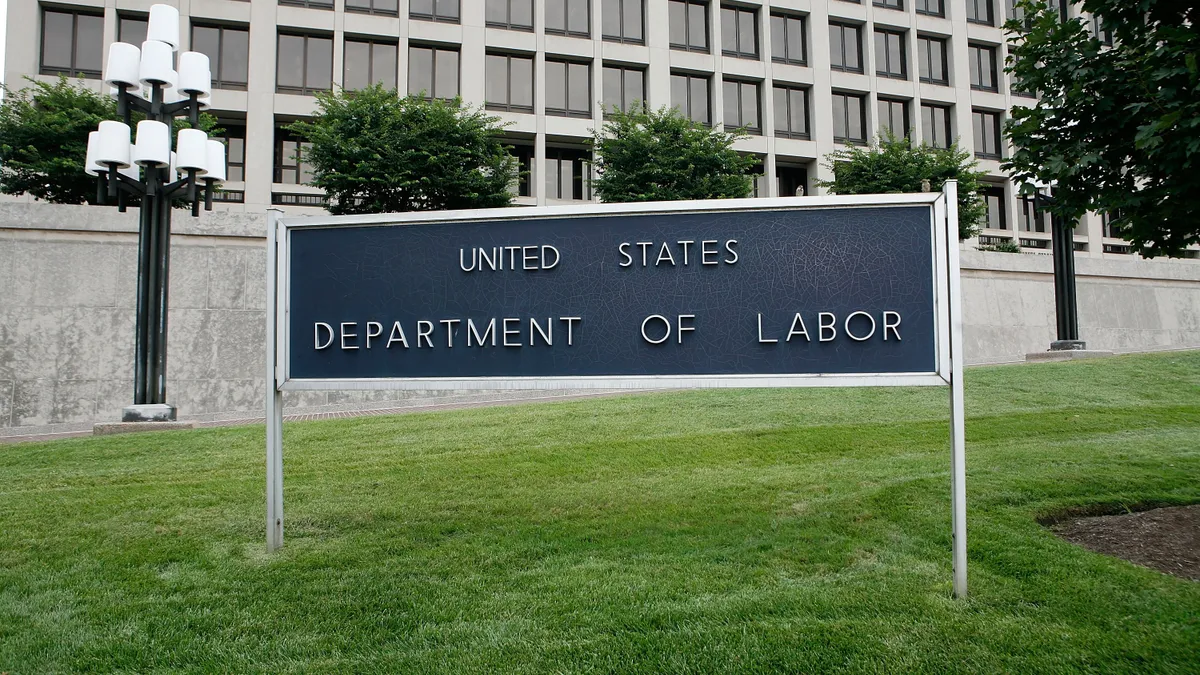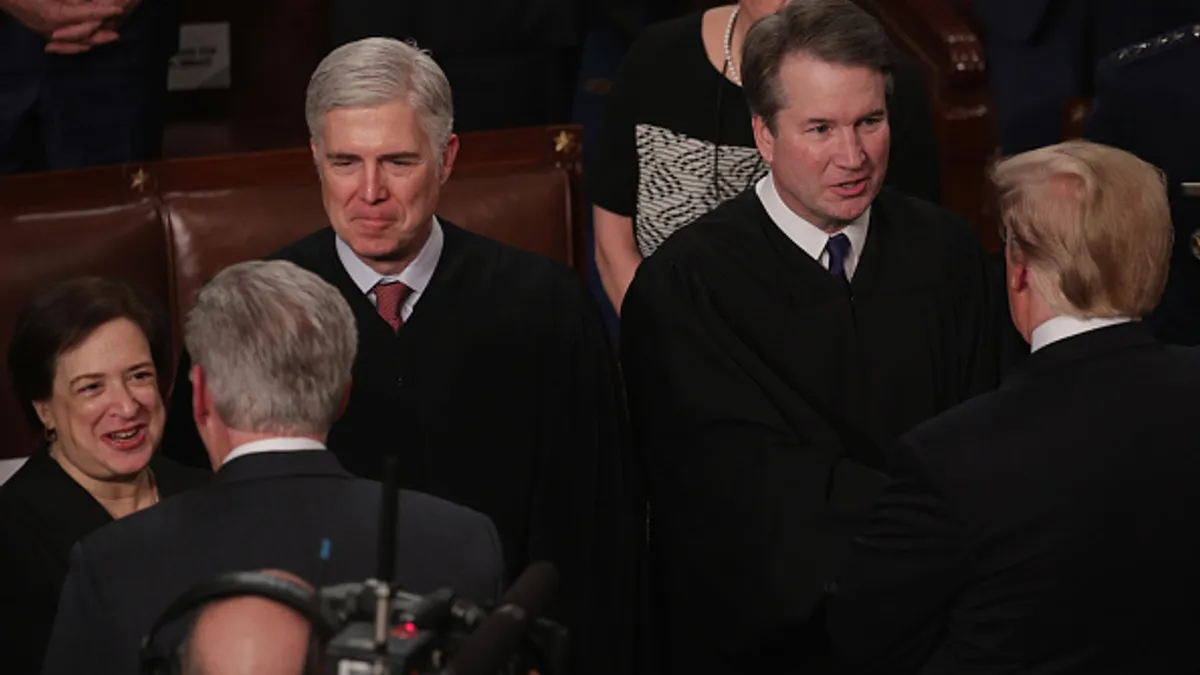Dive Brief:
- The Department of Labor and a coalition of 26 Republican-led states filed dueling motions for summary judgment to Texas’ Northern District Court on Wednesday. Both parties presented opposing interpretations of the impact the Chevron doctrine’s demise on the agency’s authority to allow fiduciaries to use ESG factors as a tiebreaker standard, according to court filings.
- The Republican-led coalition once again argued that the standard is contrary to the Employment Retirement Income Security Act of 1974 and should be vacated. Meanwhile, the Labor Department maintains the standard’s conformance to ERISA and longstanding practices and argued any relief should be “narrowly tailored.”
- The case is back in a federal district court, after the Fifth Circuit of Appeals remanded the litigation for review since a prior dismissal relied on the Chevron doctrine’s deference to agency interpretations. This judicial principle was overturned in the Supreme Court’s Loper Bright v. Raimondo ruling this summer.
Dive Insight:
The case is back before U.S. District Court Judge Matthew Kacsmaryk — whose initial dismissal in September 2023 relied on the Chevron doctrine — though with a much narrower focus. Following the case’s appearance before the Fifth Circuit, Kacsmaryk was left with the limited question of whether the Labor Department’s guidance permitting fiduciaries to consider ESG factors is consistent with ERISA or the Administrative Procedure Act — a federal law that governs how federal agencies develop and enforce regulations.
“Given the upended legal landscape, and our status as a court of review, not first view, we vacate and remand so that the District Court can reassess the merits,” the Fifth Circuit’s three-judge panel wrote in their July 18 decision.
The challenge by 26 Republican-led states — co-filed by Liberty Energy, Liberty’s oilfield services subsidiary and energy trade group the Western Energy Alliance — is now narrowly focused on a provision contained in the Labor Department’s rule, “Prudence and Loyalty in Selecting Plan Investments and Exercising Shareholder Rights.” The rule, which was finalized in 2022 and has been in effect since January 2023, allows pension fund managers to consider ESG factors, as well as other “collateral benefits,” as a tiebreaker in the case that two or more options equally serve the plan’s best interests but it is imprudent to invest in both or all options.
The Oct. 16 briefs largely reprise both parties’ arguments before the appeals court over the Loper Bright ruling’s impact on the agency’s authority to include the provision. The plaintiffs argued that the ruling requires the court to interpret the law “without deference to the agency’s interpretation,” while the Labor Department’s filing said the ruling “expressly reaffirms” that courts “may seek guidance from agency interpretations — especially where such interpretations have remained consistent over time.”
The Republican-led coalition said the rule should be set aside because it “improperly defines what constitutes a tie, permits consideration of collateral benefits and eliminates recordkeeping based on a misinterpretation of ERISA.”
“This Court should conclude … that ERISA imposes a prophylactic duty to act for the sole and exclusive financial benefit of beneficiaries,” the plaintiffs’ motion said. “There is no room for mixed motives, even if a fiduciary claims to not subordinate financial interests.”
The Labor Department restated its position — as it has throughout the litigation — that the rule reaffirms ERISA’s requirement that fiduciaries must act for the “exclusive purpose” of securing financial benefits for the plan and its beneficiaries and “ that this purpose may never be subordinated to unrelated goals.”
The agency said because of that duty and ERISA’s lack of guidance on what to do in a tiebreaker scenario, it has promulgated guidance for more than 30 years on what to do in the case that multiple investments serve the plan equally well.
“That position has remained unswerving for nearly three decades, across five presidential administrations,” the agency wrote in its brief. “This Court need not revisit its other prior conclusions — including that the Rule is not arbitrary and capricious — as Loper Bright does not bear on those conclusions.”
Attention now returns to Kacsmaryk, who will consider both motions and the question of whether the Labor Department’s tiebreaker standard aligns with the text of either the APA or ERISA. While he considers the question, the three-judge panel in the Fifth Circuit will retain this case on its docket, per the appellate panel’s July 18 decision.








